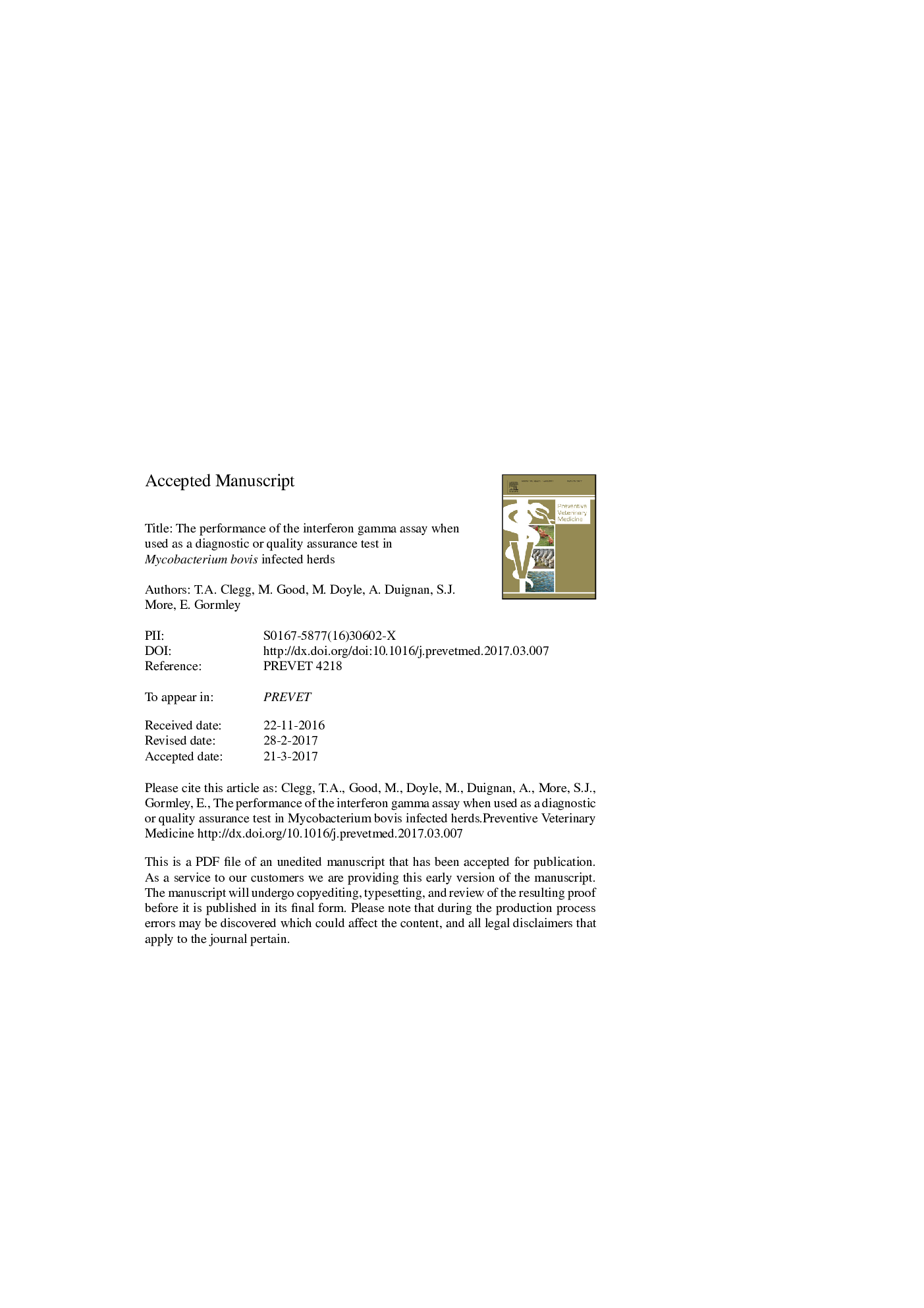| Article ID | Journal | Published Year | Pages | File Type |
|---|---|---|---|---|
| 5543528 | Preventive Veterinary Medicine | 2017 | 20 Pages |
Abstract
There are two different contexts in the Irish bTB eradication programme in which the interferon-gamma assay (IFN-γ) is applied. Firstly, the IFN-γ assay is applied routinely to high risk cohorts in herds with four or more reactors to the SICTT. The IFN-γ test is then carried out on blood samples submitted to the laboratory within 8 h of collection (diagnostic testing). Secondly, the use of the IFN-γ assay has recently been extended to test SICTT reactors as part of a general quality assurance (QA) scheme to monitor the performance of the SICTT. Blood samples from reactors are tested one day after blood collection (QA testing). In this study, we analysed the relative performance of the SICTT and IFN-γ when used in parallel as an 8 h diagnostic test and as a 24 h QA test on SICTT reactors. A total of 17,725 IFN-γ tests were included in the analysis (11,658 diagnostic tests and 6067 QA tests). Of the samples submitted for diagnostic testing, the proportion positive to IFN-γ decreased with the severity of interpretation of the SICTT result. Of the standard reactors that were tested with IFN-γ in the QA programme, 92.2% were positive to the IFN-γ test. Among animals that were SICTT âve/IFN-γ +ve, 18.9% were positive at post-mortem compared to 11.8% of those that were SICTT +ve (standard reactor)/IFN-γ âve. These results highlight the risk associated with retaining SICTT âve/IFN-γ +ve animals, and suggest that prompt removal of these animals is necessary to reduce the potential for future transmission.
Related Topics
Life Sciences
Agricultural and Biological Sciences
Animal Science and Zoology
Authors
T.A. Clegg, M. Good, M. Doyle, A. Duignan, S.J. More, E. Gormley,
